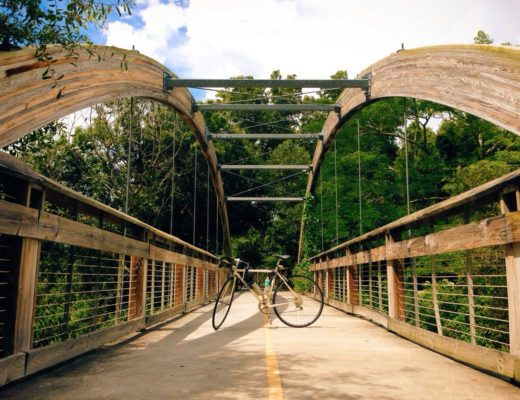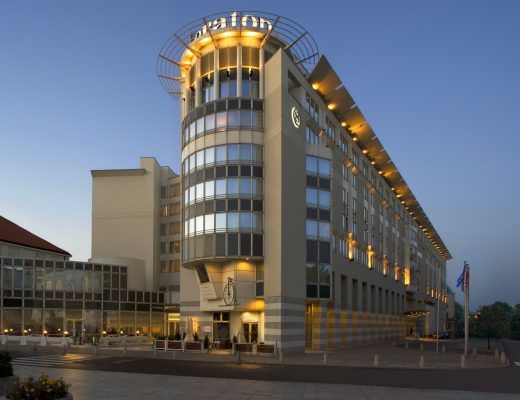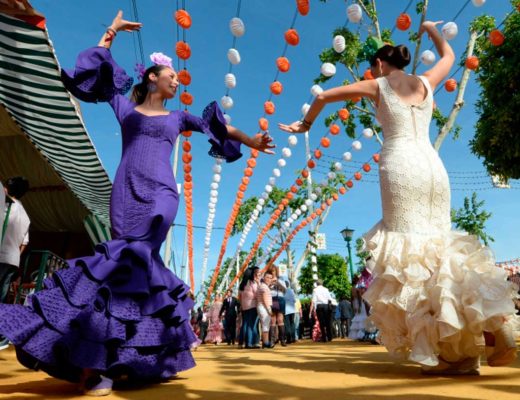Seville, my favorite city in Spain, is located in the heart of Andalusia, in southern Spain and is home to a breathtaking, vibrant culture and history. From traditional flamenco music playing on the streets to the bright and welcoming local Sevillanos, Seville just sparkles. According to traditional legend, Seville was founded by Roman divine hero Hercules, and it’s home many historic sites that send you back into what life was like along the Guadalquivir River years ago. A great place to try out Spanish tapas, relax in royal gardens, or get lost in famous architecture, Seville will wow you with its joyous culture.
When to visit

Seville-spring
My favorite time of the year to visit Seville is in Spring. This is the time when the city hosts two of its major festivals. Stay in the city’s old town to explore the cobbled streets of the Santa Cruz quarter and the breathtaking Alcázar Palace. Soak up the atmosphere on the banks of the Guadalquivir, and admire the views from the ancient cathedral tower and recently opened Parasol Metropol.
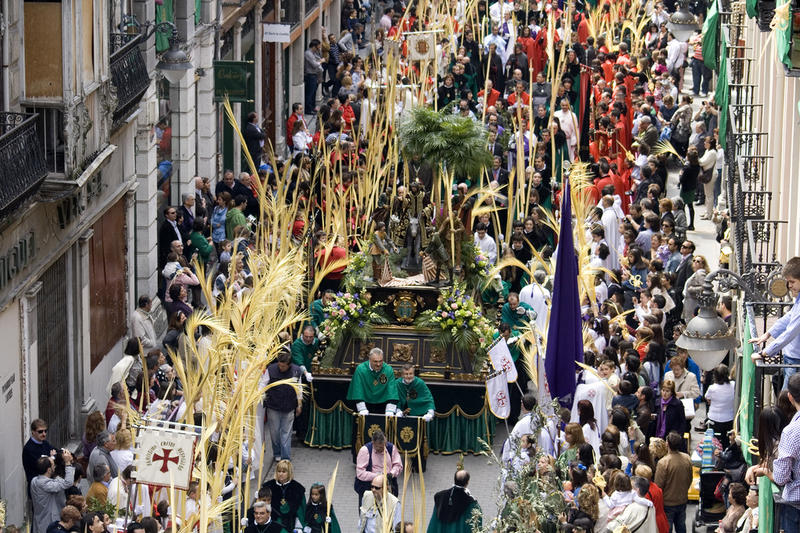
Semana-Santa
To see Seville at its most action-packed, catch the Semana Santa (Easter Holy Week), when the streets fill with people marking the last days of Christ’s life. Numerous church brotherhoods take part in processions, carrying heavy, ornately decorated floats displaying bible scenes and statues, followed by the penitents, in long robes and pointed hoods.
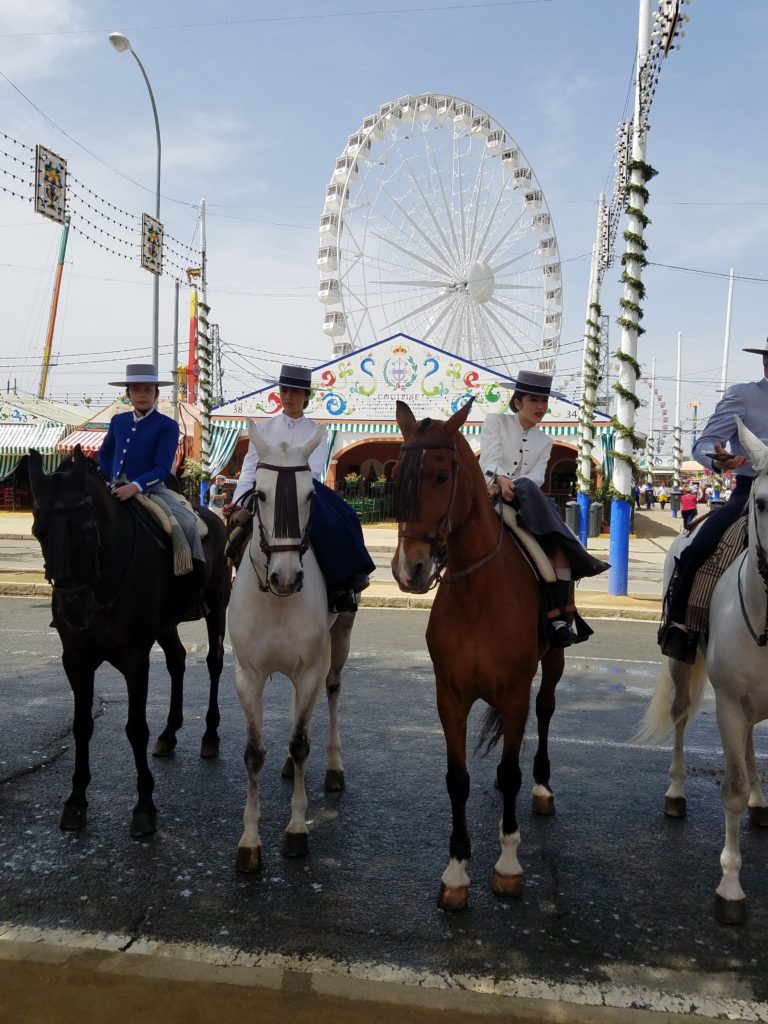
Calle de Inferno-Feria De Sevilla
Next on Seville’s calendar is the Feria de Abril or La Feria De Sevilla (Always 2 weeks after Easter), when Los Remedios, to the south-west of the city, stages a week of colorful celebration and partying. This is the Fair I attended and would highly recommend.

Seville-gardens-Spring
If you prefer a quieter life, opt for May, a perfect month to bask in Seville’s balmy spring sunshine and sweet scent of orange blossom.
Perfect Day One in Seville, Spain:
 After restful night and delicious breakfast at our hotel, Alfonso XIII, Luxury Collection, we headed out to experience Seville. Our first stop, Seville’s Cathedral, was 5 minutes walk from centrally located Hotel Alfonso XIII. ( Click Here for more info on Hotel Alfonso XIII, a Luxury Collection ).
After restful night and delicious breakfast at our hotel, Alfonso XIII, Luxury Collection, we headed out to experience Seville. Our first stop, Seville’s Cathedral, was 5 minutes walk from centrally located Hotel Alfonso XIII. ( Click Here for more info on Hotel Alfonso XIII, a Luxury Collection ).
Seville Cathedral and La Giralda (bell tower)
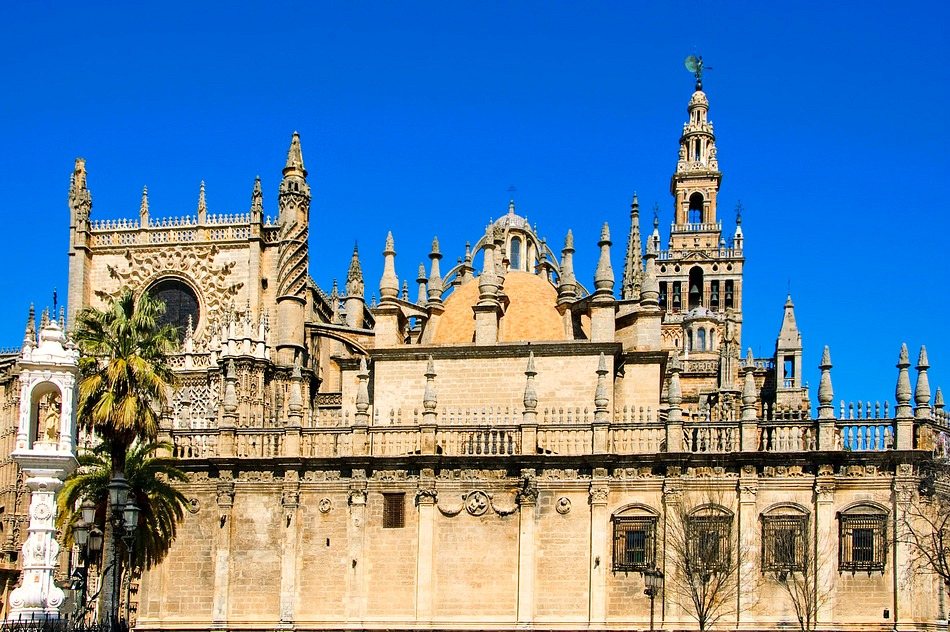
View of Seville Cathedral with the Giralda in the background

Nave of the Cathedral of Seville, Andalusia, Spain
Seville’s cathedral occupies the site of a great mosque built by the Almohads in the late 12th century. La Giralda, its bell tower, and the Patio de los Naranjos are a legacy of this Moorish structure. Work on the Christian cathedral, began in 1401 and took just over a century to complete. Today it remains the largest gothic cathedral in the world and third largest of any style. It was meant to impress subjects and visitors to Seville, and showcase wealth and power of Spain. It is certainly one of the most magnificent cathedrals I ever visited, and well worth your time.
Main tourist draw within cathedral is the Tomb of Christopher Columbus.

Tomb of Columbus
Take your time enjoying Gothic immensity and the works of art in its chapels and Treasury. Visitors can also climb La Giralda for superb views over the city, or enjoy views of the city from the cathedral rooftop.
Real Alcázar

Entrance-Alcazar-Seville
In 1364 Pedro I ordered the construction of a royal residence within the palaces built by the city’s Almohad rulers . Within two years, craftsmen from Granada and Toledo had created a jewel box of Mudéjar patios and halls, the Palacio Pedro I, which now forms the heart of Seville’s Real Alcázar. Later monarchs added their own distinguishing marks. Isabel I dispatched navigators to explore the New World from her Casa de la Contratación, while Carlos V had grandiose, richly decorated apartments built. Visit early in a day before tourists arrive. If you visiting in Summer, I would make it a first stop, then head to the Cathedral to cool off from Summer heat.
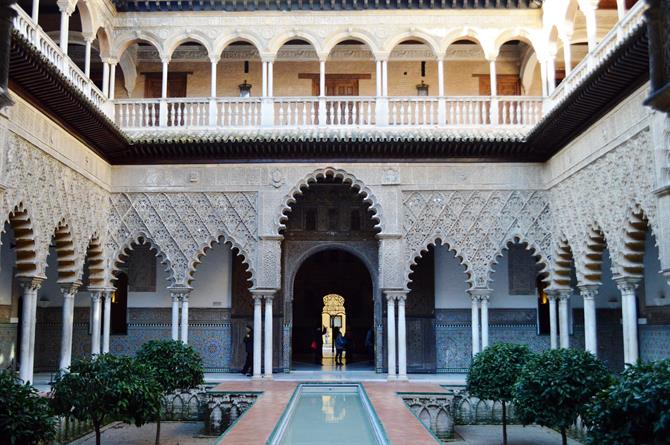
Seville-Alcazar
Gardens of the Alcázar
Don’t forget to visit the gardens. Laid out with terraces, fountains and pavilions, these gardens provide a delightful refuge from the heat and bustle of Seville.
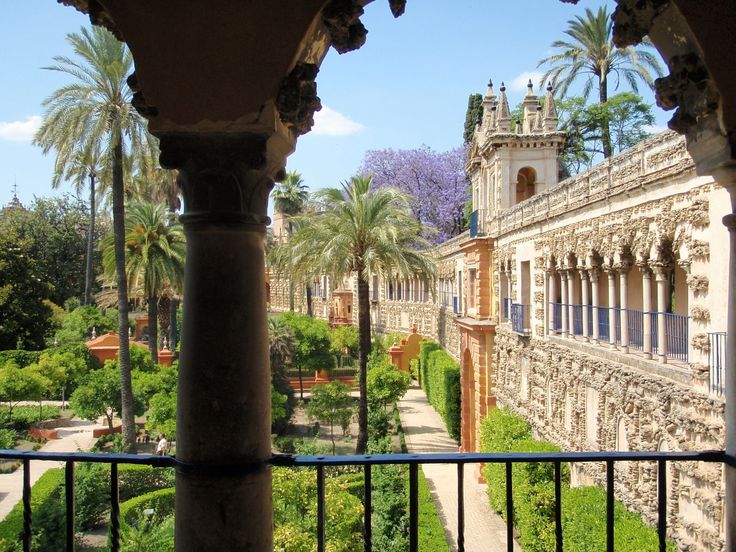
Gardens-Alcazar
Palacio Arzobispal
18th-century Archbishop’s Palace, is still used by Seville’s clergy. You can see it while you enter Plaza Virgen de los Reyes after leaving Seville’s Cathedral.

Archbishop’s Palace
SANTA CRUZ
The Barrio de Santa Cruz, Seville’s old Jewish quarter, is a warren of white alleys and patios that has long been the most picturesque corner of the city. Many of the best-known sights are grouped here: the cavernous Gothic cathedral with its landmark Giralda; the splendid Real Alcázar with the royal palaces and lush Jardines del Alcázar; and the Archivo de Indias, whose documents tell of Spain’s exploration and conquest of the New World.
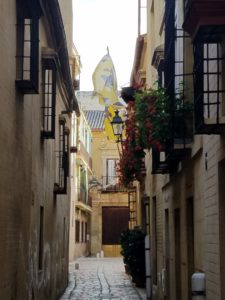
Barrio de Santa Cruz
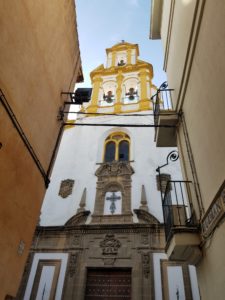
Barrio de Santa Cruz
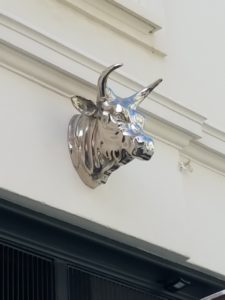
Barrio de Santa Cruz
Spreading northeast from these great monuments is an enchanting maze of whitewashed streets. The artist Bartolomé Esteban Murillo lived here in the 17th century while his contemporary, Juan de Valdés Leal, decorated the Hospital de los Venerables with fine Baroque frescoes.
Lunch
Good bars and restaurants make Barrio de Santa Cruz well worth a visit. Stop by and grab some tapas and wine. After all, legend has it, tapas were invented in Seville.

Lunch
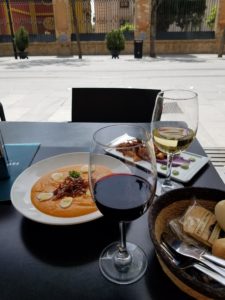
Lunch
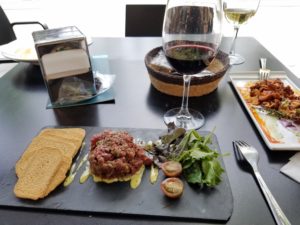
Lunch
El Arenal and Guadalquivir Riverfront
Once home to the port of Seville, El Arenal also housed the artillery headquarters and ammunition works. Now its atmosphere is set by Seville’s bullring, the majestic Plaza de Toros de la Maestranza, which is located here. During the bullfighting season bars and restaurants are packed, but for the rest of the year the backstreets remain quiet. The riverfront is dominated by one of Seville’s best-known monuments, the Moorish Torre del Oro. The long, tree-lined promenade beside Paseo de Cristóbal Colón is the perfect setting for a romantic walk along the Guadalquivir.
Walk across one of many bridges to take in great views of Seville at night from the opposite side of the river.
Torre del Oro
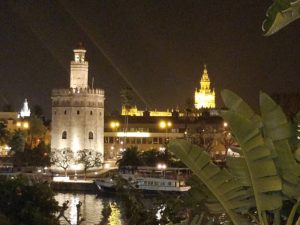
Torre del Oro
In Moorish times the Tower of Gold formed part of the walled defences, linking up with the Real Alcázar and the rest of the city walls. It was built as a defensive lookout in 1220, when Seville was under the rule of the Almohads, and had a companion tower on the opposite river bank. A mighty chain would be stretched between the two to prevent ships from sailing upriver. In 1760 the turret was added. The gold in the tower’s name may refer to gilded azulejos that once clad its walls, or to New World treasures unloaded here.
Plaza de Toros de la Maestranza
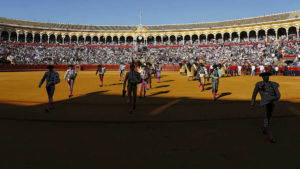
Corrida-Feria-Seville
Seville’s 18th-century bullring, one of Spain’s oldest, has a Baroque façade in white and ochre. The bullring in Seville is known as one of the most beautiful in Spain and is commonly known by the locals as “the cathedral”. For visitors to Seville, tickets can be purchased directly at the bullring or online.
Dinner

AlfonsoXIII Hotel-main-course
All the walking and sightseeing made us ready to enjoy dinner at our hotel. Main restaurant at Alfonso XIII Hotel, Restaurante San Fernando is well worth the price, as food and service are excellent. You don’t have to be a quest of the hotel to enjoy it ,and I highly recommend it.
Perfect Day 2 in Seville, Spain
After early breakfast we headed to explore Saville’s outdoor attractions Plaza de España and Parque de Maria Luisa, but before we got there we walked by Universidad (University of Seville).
Universidad de Sevilla and Carmen
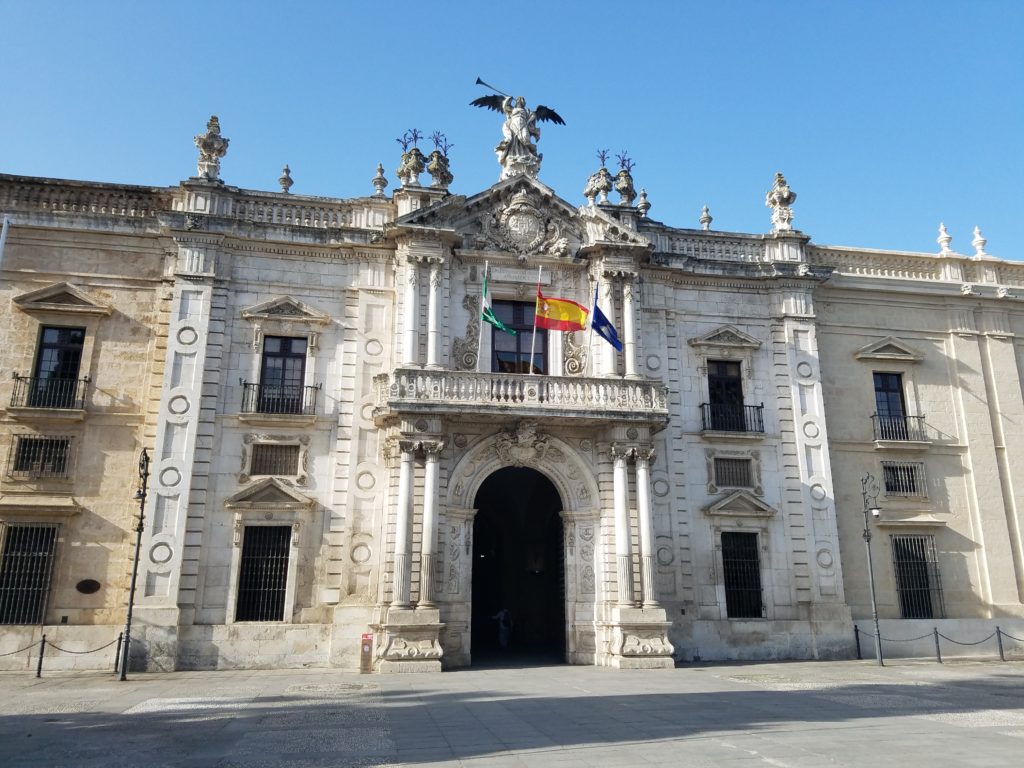
Universidad de Sevilla
The former Real Fábrica de Tabacos (Royal Tobacco Factory) is now part of Seville University. It was a popular attraction for 19th-century travelers in search of Romantic Spain. Three-quarters of Europe’s cigars were then manufactured here, rolled on the thighs of over 3,000 cigarreras (female cigar-makers).The factory complex is the largest building in Spain after El Escorial in Madrid and was built between 1728–71. The moat and watchtowers show the importance given to protecting the king’s lucrative tobacco monopoly. To the right of the main entrance is the former prison where workers caught smuggling tobacco were kept. To the left is the chapel, now used by university students.
Carmen

Carmen of Seville
The hot blooded cigarreras working in Seville’s Royal Tobacco Factory inspired the French author, Prosper Mérimée, to create his famous gypsy heroine, Carmen. The short story he wrote in 1845 tells the tragic tale of a sensual and wild woman who turns her affections from a soldier to a bullfighter and is then murdered by her spurned lover. Bizet based his famous opera of 1875 on this impassioned drama, which established Carmen as an incarnation of Spanish romance.
PARQUE MARÍA LUISA
The area south of the city center is dominated by the extensive, leafy Parque María Luisa, Seville’s principal green area. This vast park takes its name from Princess María Luisa de Orléans, who donated part of the grounds.
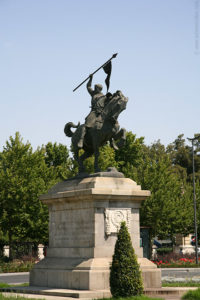
El-Cid-Statue
Before entering a park notice the statue of El Cid.
A great part of this park originally formed the grounds of the Baroque Palacio de San Telmo, dating from 1682. Today the park is devoted to recreation; with its fountains, flower gardens and mature trees it provides a welcome place to relax during the long, hot summer months.

PARQUE MARÍA LUISA

PARQUE MARÍA LUISA

PARQUE MARÍA LUISA
Many of the historic buildings situated within the park were erected for the Ibero-American Exposition of 1929. This international jamboree sought to reinstate Spain and Andalusia on the world map.
Plaza de España
One of the most iconic sites of Seville, the Plaza de España boasts its beauty through beautiful architecture and tiles of maps and historic scenes of the provinces of Spain. The blue and white tiles are so intricate and the small river that flows around the plaza is a perfect place for a short boat ride in the middle of the city.
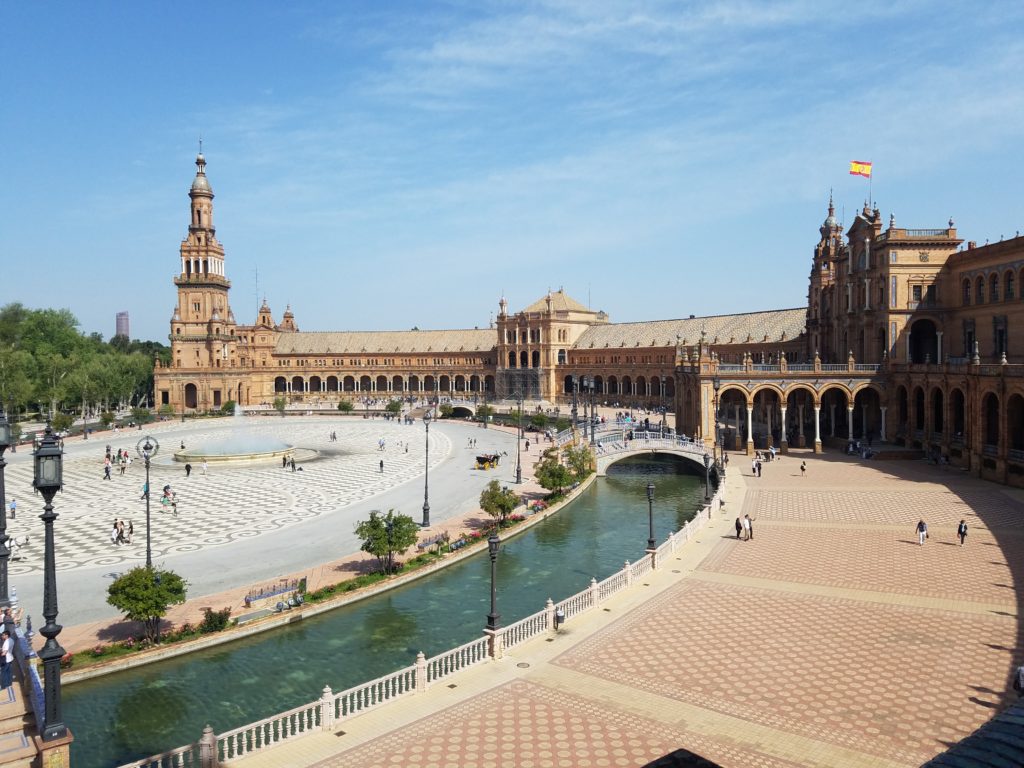
Plaza de España

Plaza de España
Fun fact about Plaza de España is that some scenes from Star Wars were shot here, and it has been a favorite spot for many different filmmakers.
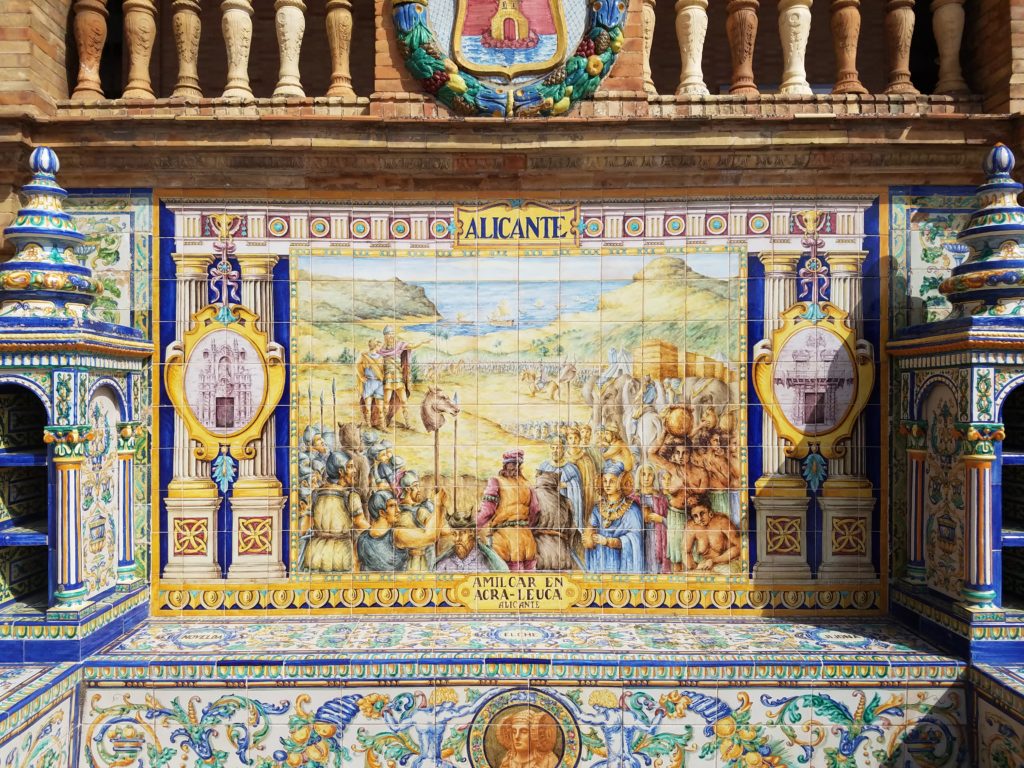
Plaza de España
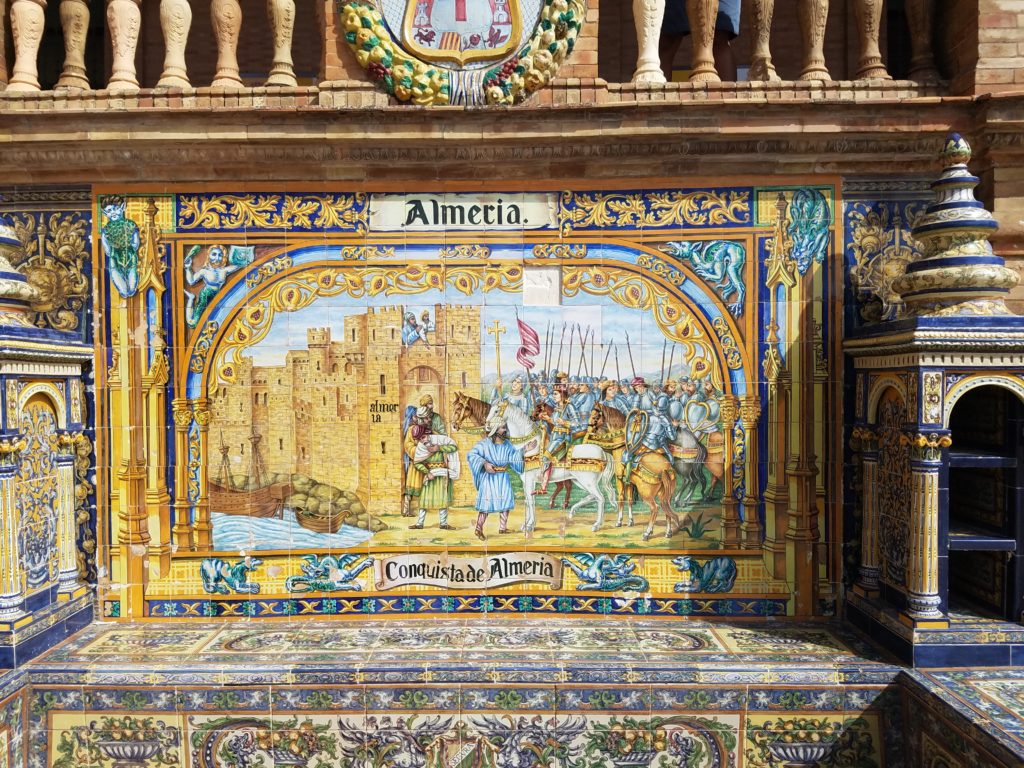
Plaza de España
Afternoon at La Feria De Sevilla
After walking through the gardens we headed across the river to partake in Seville’s most magical festival La Feria de Sevilla. I wrote a separate article-post about it. Please feel free to click the link below to read it. CLIC HERE>“La Feria de Sevilla”
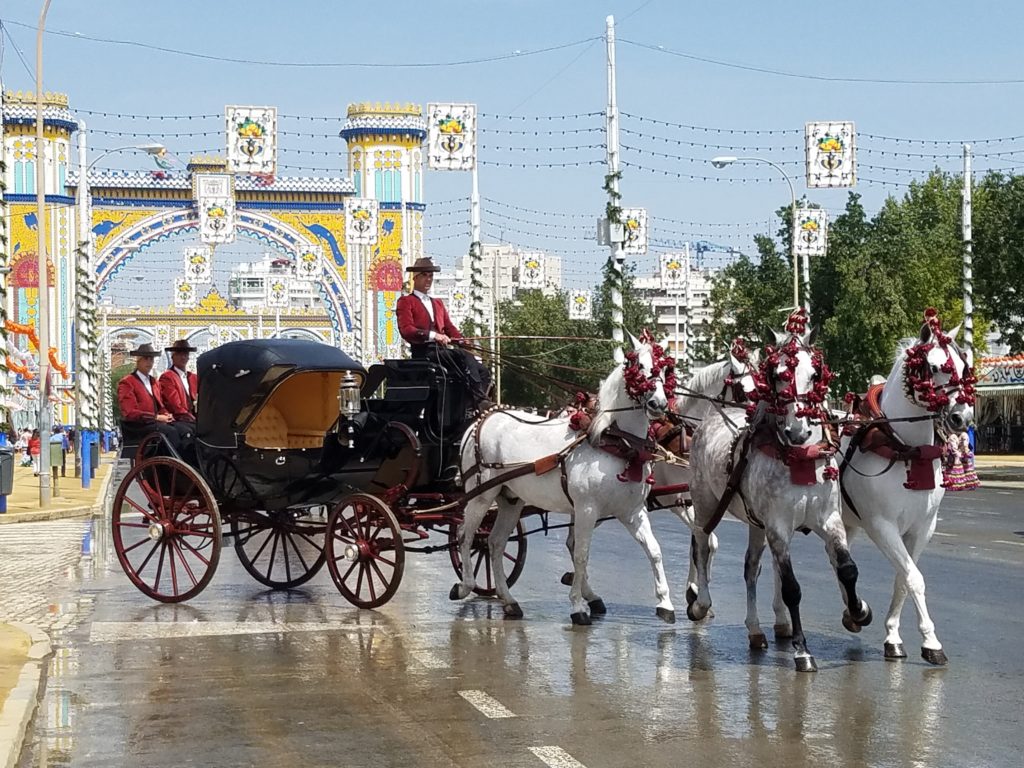
Afternoon at la Feria de Sevilla


